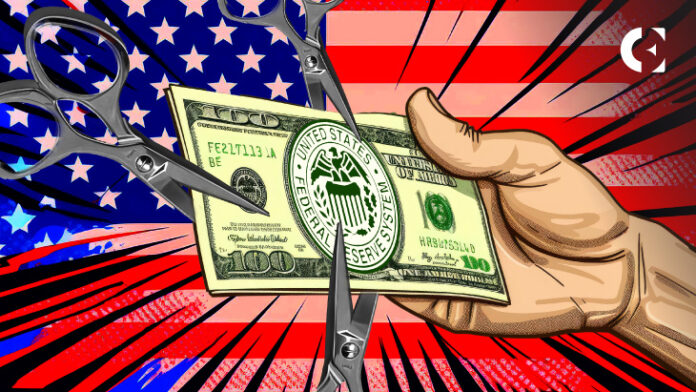- Analyst Brett Eth hyperlinks the Fed's anticipated charge cuts to 2007.
- Fed chief Powell hints at charge cuts on account of cooling US labor market and inflation goal approaching.
- World markets have blended reactions to the potential charge reduce.
Market analyst Brett Eth drew parallels between the Federal Reserve's anticipated charge reduce on September 18, 2024 and an analogous transfer in 2007. Brett famous that whereas Federal Reserve charge cuts usually result in long-term market features, they will set off short-term declines. .
Fed chief Jerome Powell just lately hinted at a charge reduce in September and expressed confidence that inflation is nearing the Fed's 2% goal. This comes because the US labor market cools, indicating a potential financial slowdown. Anticipated inflation knowledge due out on Friday is forecast to be subdued, additional boosting the chance of a charge reduce. Moreover, present market expectations are in line for a 0.25% reduce on the upcoming Fed assembly, with some analysts even predicting a extra aggressive 0.5% reduce.
Brett defined that in 2007, the Federal Reserve started decreasing rates of interest after they have been at 5.25%. By means of seven charge cuts between 18 September 2007 and 30 April 2008, the speed was lowered to 2%.
Equally, present charges are at 5.25%-5.5% in 2024, with the preliminary reduce anticipated on September 18. Projections recommend as many as 9 charge cuts by September 2025, which might result in a charge reduce to three.25%-3.5%.
The analyst additionally identified that whereas Fed cuts are usually constructive in the long term, they usually result in short-term bearish traits. He defined that these cuts don’t set off a recession, however are supposed to ease financial stress. Traditionally, the S&P 500 ($SPX) has seen a mean decline of round 30% after charge cuts. Moreover, the market often takes about 13 months to backside out.
Globally, markets have already begun to react to a possible charge reduce. Qatar's benchmark index rose 1.2% within the Gulf area, boosted by features from Qatar Nationwide Financial institution. Equally, Dubai's index rose 0.8%, boosted by Emaar Properties. In distinction, the Abu Dhabi index fell barely and the Saudi Arabian market remained flat. Elsewhere, Egypt and Oman posted small features pushed by native market elements.
Disclaimer: The knowledge offered on this article is for informational and academic functions solely. This text doesn’t represent monetary recommendation or recommendation of any variety. Coin Version shall not be accountable for any losses incurred because of using mentioned content material, services or products. Readers are suggested to train warning earlier than taking any motion associated to the Firm.
